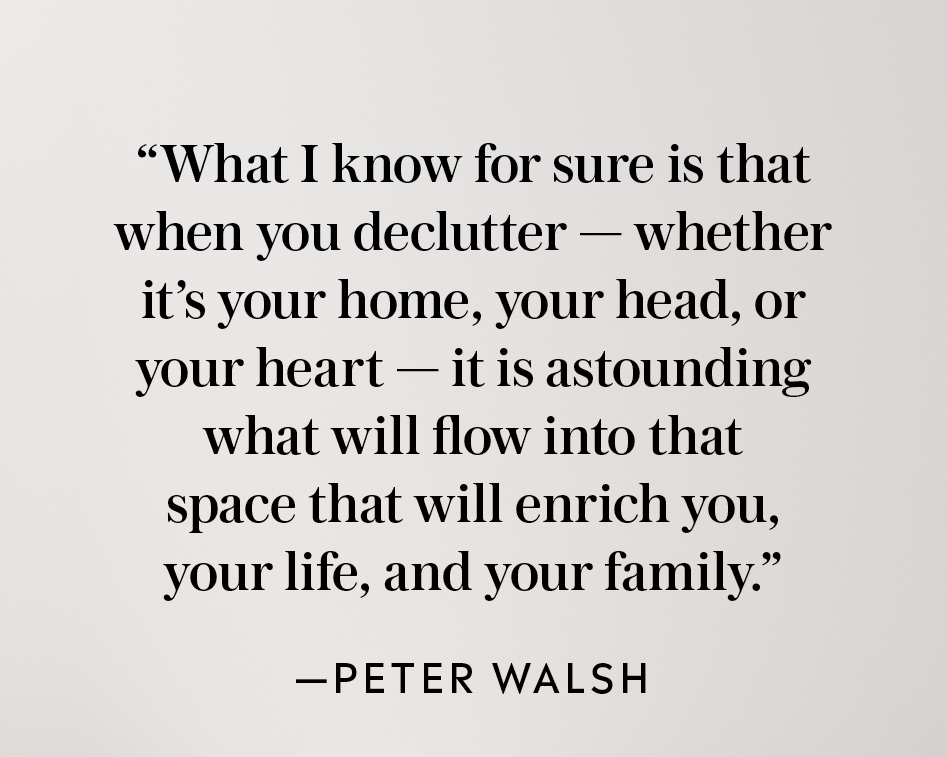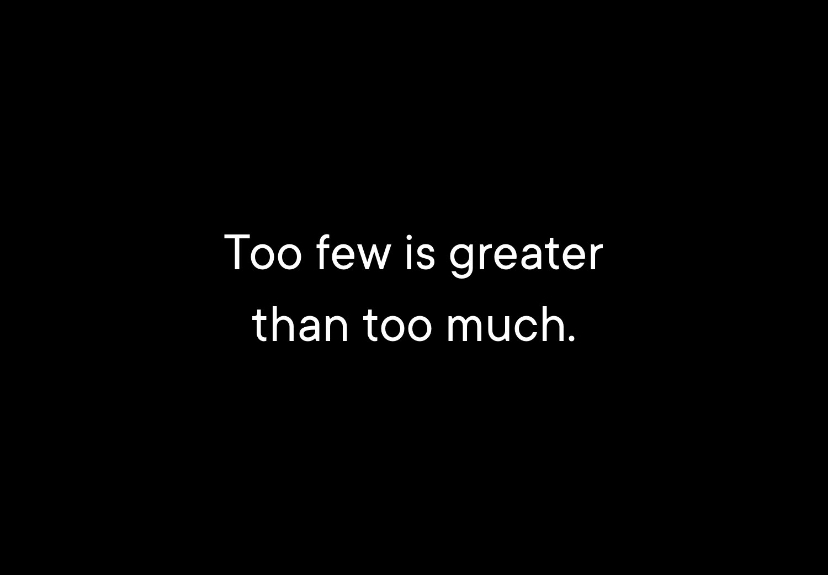I think it is safe to say we – as in collectively all of us living in the United States – own too much stuff. If the debt we put ourselves in and the anxiety we create for ourselves aren’t enough to prove that point consider this: NBCnews.com reported that the average home has 300,000 items in it. Three-hundred thousand?
That is a lot of stuff.
NPR reported that the average size of the American home has tripled in the last 50 years. Which means there is more room for more stuff. And still, according to the New York Times Magazine, one in every ten Americans rents offsite storage—the fastest growing segment of the commercial real estate industry over the past four decades.
Reading all of this certainly paints the picture of job security for me. But in all honesty, I’d rather that not be the case.
I would rather people adopt a minimalist mindset. And live their lives consciously and deliberately not only with what they do but in what they choose to keep in their head, heart, and home. Living that way makes us more available to life and the life we want to live. And the very best part about this is when you can live with that freedom you are happier. You are more present. And you are able to do and be more for yourself and others.
It is a beautiful cycle that produces powerful results.
But too much stuff puts a cog in the wheel. And as a result, on a fundamental level, we aren’t functioning well in many aspects of our life. We don’t eat well because we can’t find the counters tops. We don’t work well because we are buried by paper and unnecessary supplies. And we don’t connect enough – with ourselves for sure – and with others, because our time is cluttered by digital everything. It leaves us depleted and with a sense that we have no room, time, or mental bandwidth for meditation, a walk alone, or lunch with an old friend. That dysfunction has a ripple effect in homes, communities, and organizations. By consuming too much and holding onto purposeless stuff people simply can not live their best lives. They can’t create their life and live it on their terms.

And that breakdown creates a world where stress and overwhelm and reacting to life is the norm.
It’s not a fun way to live.
I think we cherish too greatly the physical things we have in our life, so much so that the attachment isn’t often to the actual physical item. The items almost take on magical qualities that go far beyond the item itself. So we get stuck – or perhaps confused – thinking owning some “thing” is what our happiness and worth are based on.
We also keep things as a way to paint a picture of how we want our life to look on the outside. We think full bookshelves mean we are well-read. When really it just says you have a lot of books. You being well-read, a good cook, and a hard worker isn’t because of what you own externally. It is because of who you are internally.
Andrew Mellen, a professional organizer and author of Unstuff Your Life, asks the question, “Is your home an accurate external reflection of you?”
If you want who you are internally to match the external reflection pay attention to these three signs as they are good indications that you have too much stuff.
1. You can’t park the car in the garage
The garage is, in fact, the correct home for your car and as such, it is where it should be parked. Yes? Yes. But what many people do is they use it as a dumping spot for things they can’t make a decision on. Or they simply put no attention to storing correctly things that belong in the garage so it looks cluttered. And that produces more clutter. The garage is an “out of sight out of mind” kind of place. Similar to an attic or basement, it can be easy to leave something systemless because it isn’t where you spend the majority of your time. You don’t think it “affects” you, but it does. If you can’t park your car in the garage I would strongly urge you to consider that you have too much stuff.
Set aside a few different days to purge. Do one category at a time (toys, gardening, outdoor equipment, etc), lighten the load, pare down, and minimize to what is needed and used. Then use shelving along the perimeter of the garage to store your categories, containing like items wherever possible. Oh, and then…park your car in the garage.
2. There is always laundry out and “undone”.
I know that undone laundry can sometimes be a matter of too many other people’s clothes to keep on top of. But really regardless of whether you are a parent or caregiver to five, one or none, your laundry should not be anywhere but the temporary correct home – the washer/dryer. Or one of two permanent correct homes – the dirty laundry basket or in a closet/drawer. Yes, you might need to schedule consistent time to do laundry especially if you manage it for more than yourself. But whether you schedule your time or not around doing that task isn’t the main reason there is laundry always out of place – not put away, wrinkled, in a laundry basket, not in a laundry basket.
The real culprit is one of two things (or both). You either aren’t completing all the steps required of “doing” laundry or you have too much laundry/clothes in the first place. And of course, the second thing makes the first much harder to do.
Yes, there are steps to doing the laundry. You wash and dry, fold, and put away. See that last step? If you disregard that as important what you end up with is a dining room table, or a stairway to the second floor, filled with stacks of clean laundry. But if you have more clothes than you might ever need you will struggle to keep up with it all. The more clothes you have, the more clothes you have to wash. And dry. And fold. And…put away.
Consider purging one category of clothes at a time. Try things on. Decide what you like, need, and will use, and put it away. Let go of old, outdated, and duplicated items. You’ll save yourself a ton of time and your space will no longer look like a laundromat gone wild.
3. Too much is homeless.
A place for everything and everything in its place. I can’t remember who first said it but they were very smart. The way to a tidy, neat, breathable home is to have a home for everything in it. In creating those homes it is important to create solid physical boundaries for things. This helps you from keeping too much. And also helps you use your space well and be more diligent with what you keep and why. Sometimes we think if we have space for something it is okay to keep it. The reality is we don’t need to fill all the spaces. We need to honor the limits of the space we create and then question an item that seems to have no place to fully assess whether we need it.
If you have too many homeless items in senseless places you likely have a breakdown in a system. That breakdown usually stems from having too much. When items are stored in unusual places, it is often a sign that you don’t have enough room for the number of things you have. If you are storing cookbooks in the bathroom closet, you could consider paring down your collection. When you find a homeless item question it immediately. Ask yourself if serves a purpose – a real reason for taking up space in your place. If it does, put it in its rightful home. You might need to purge a little to make room but that is the name of the game. If it doesn’t serve a purpose, donate, trash, recycle it, or give it to your sister Peggy’s friend down the street. Just let go of what makes no sense.

Stay within the limits of the systems and space you have created.
Move out what is duplicated, unneeded, and homeless.
Create your life not from what you own. Create it from the space in your place that allows you the freedom to become.
If you need some coaching to help you make sense of your space let’s talk!
__________________
Watch and learn more!





Touché!!!